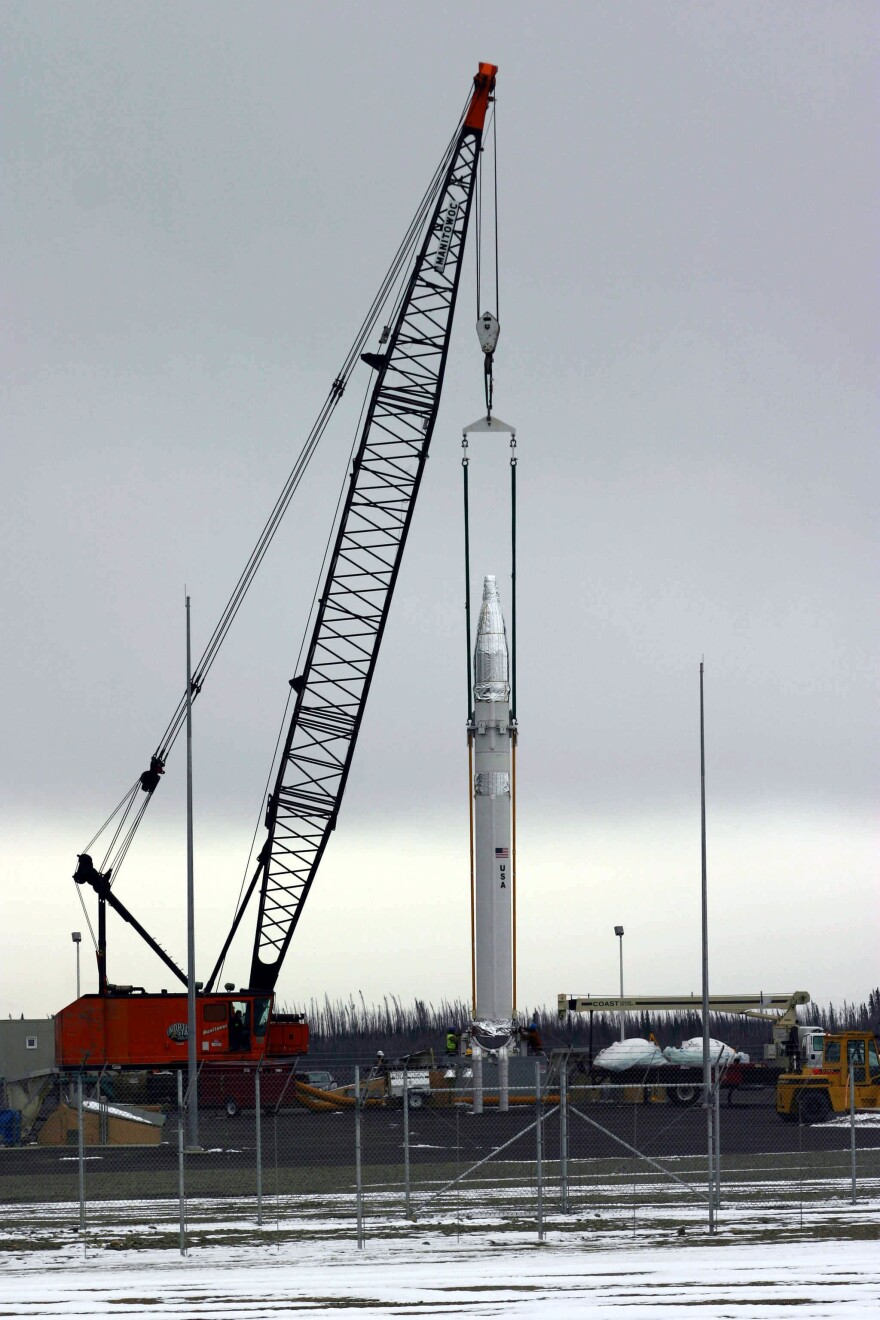Missile-defense base now has 62 silos -- but UAF experts ask: ‘Are hypersonics making the technology obsolete?’
Contractors are nearing completion of a fourth missile field at Fort Greely that’ll increase the number of interceptor missile silos there to 62. But two University of Alaska Fairbanks military experts worry the technology is rapidly becoming obsolete.

Boeing has been working on missile field 4 since it was awarded a $6.5 billion contract eight years ago. The aerospace company is the main contractor for Fort Greely’s missile defense base since work began on the installation in 2002.
Boeing and its subcontractors completed construction of 20 silos in missile field 4 three years ago. But a spokesperson for the Missile Defense Agency says installation of launch-control equipment for the silos won’t be completed until November.
Those silos, like the 42 others at Fort Greely, will house missiles designed to intercept an incoming ICBM in midflight, just outside the atmosphere.
The Ground Based Interceptors are a key part of the Ground-based Missile Defense, or GMD system. That’s one of four elements in the multi-layered system designed to protect the United States from nuclear attack launched by so-called rogue nations like Iran and North Korea.
The missile defense system likely would be effective against a North Korean missile attack, says Cameron Carlson. He’s the Dean for UAF’s College of Business and Security Management.
“A lot of their missiles are still ICBMs, and we have capabilities to meet those ICBMs at this point,” he said.

Alaska Sen. Dan Sullivan has proposed spending $12 billion to replace all the Ground-Based Interceptors with more advanced Next Generation Interceptors. Carlson and his College of Business and Security Management colleague, Troy Bouffard, both say the Pentagon must now focus on new, advanced threats. Those include drones and maneuverable hypersonic missiles that could overwhelm the multilayered missile defense system.
“When it comes to the new threat that we’re learning about, hypersonic cruise missiles, interceptors will not work. It’s not physically possible,” said Bouffard, who’s an assistant professor for Arctic Security and director of the Center for Arctic Security and Resilience.
Bouffard said the Next-Generation Interceptors that’ll placed in missile field 4 likely will be effective against conventional ballistic missile -- but not for hypersonics and drones.
“We're probably five, 10 years from Russia and China having hypersonic cruise missiles fully operationalized,” he said. “And shortly after that, our adversaries like North Korea and other rogues will get some kind of form of a cruise missile hypersonic developed.”
According to media reports, Russia has already begun that technology transfer. And North Korea claimed it successfully tested an intermediate-range hypersonic missile in January.
“So just detecting them, let alone identifying them, is a complete new game,” he said. “It's gonna take other, exotic type-weapons, probably high-energy type stuff from satellites – i.e., lasers.”

Bouffard says advanced sensors like the radar facility at Clear Space Force Station scan the horizon for missiles, but they aren’t designed to detect low-flying maneuverable hypersonics and drones. He says the United States needs to develop a new generation of space-based sensors and countermeasures, like the so-called Golden Dome system proposed by President Trump. The Congressional Budget Office last week estimated that project could cost up to $542 billion.
“We need to work towards solutions for dealing with hypersonic cruise missiles and all the variants that it has,” Bouffard said. “That is the threat of now and the future.”
Carlson and Bouffard agree that something like the Golden Dome is needed to meet the new threat. They say Fort Greely would be a part of that system, but the constellation of satellites, lasers and ground-control stations would be based in space and on land, sea and air worldwide.



